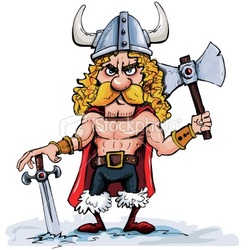Settlement Patterns
After being blown off course in 874 AD, Vikings landed on Iceland. From 874-930 AD many Viking settlers arrived in Iceland with Celdic women from Scandinavia. These Vikings claimed inhabitable areas of land. Infolgur Armnarson was the first settler of Iceland. He came in 874 AD with his family and descendants. He started a farm in Iceland's current capital, Reykjavik. The discovery of Iceland aided in the exploration of Greenland as explorers could use Iceland as a place to stay while travelling to and from Greenland. (Travelnet)
Until the end of the 19th century, the population of Iceland was evenly distributed in the inhabitable areas, because agriculture was a main export. However, in the 1800's, many Icelandic people immigrated to Canada because of the harsh economic situation. Reykjavik was a small fishing village and trading post. With the advances of the fishing industry, commerce, and services in the 20th century during the Industrial Revolution, the population accumulated in towns and villages. More than 90% of the population lived in communities of 200 or more people at the beginning of the 21st century. Approximately 3/5th sof the population lives in Reykjavik. (CIA World Factbook)
Iceland's biggest city and capital is Reykjavik, meaning "Bay of Smokes". On August 18, 1786, the Danish ruled island was granted municipal powers and was chosen as the administrative center. Today, Reykjavik is a commercial, and industrial center of the country. The city manufactures processed fish, food products, machinery, and metal products. The city is mostly built of concrete. Most of the hot water is piped from the famous hot springs. (Encyclopedia Britannica)
Until the end of the 19th century, the population of Iceland was evenly distributed in the inhabitable areas, because agriculture was a main export. However, in the 1800's, many Icelandic people immigrated to Canada because of the harsh economic situation. Reykjavik was a small fishing village and trading post. With the advances of the fishing industry, commerce, and services in the 20th century during the Industrial Revolution, the population accumulated in towns and villages. More than 90% of the population lived in communities of 200 or more people at the beginning of the 21st century. Approximately 3/5th sof the population lives in Reykjavik. (CIA World Factbook)
Iceland's biggest city and capital is Reykjavik, meaning "Bay of Smokes". On August 18, 1786, the Danish ruled island was granted municipal powers and was chosen as the administrative center. Today, Reykjavik is a commercial, and industrial center of the country. The city manufactures processed fish, food products, machinery, and metal products. The city is mostly built of concrete. Most of the hot water is piped from the famous hot springs. (Encyclopedia Britannica)

